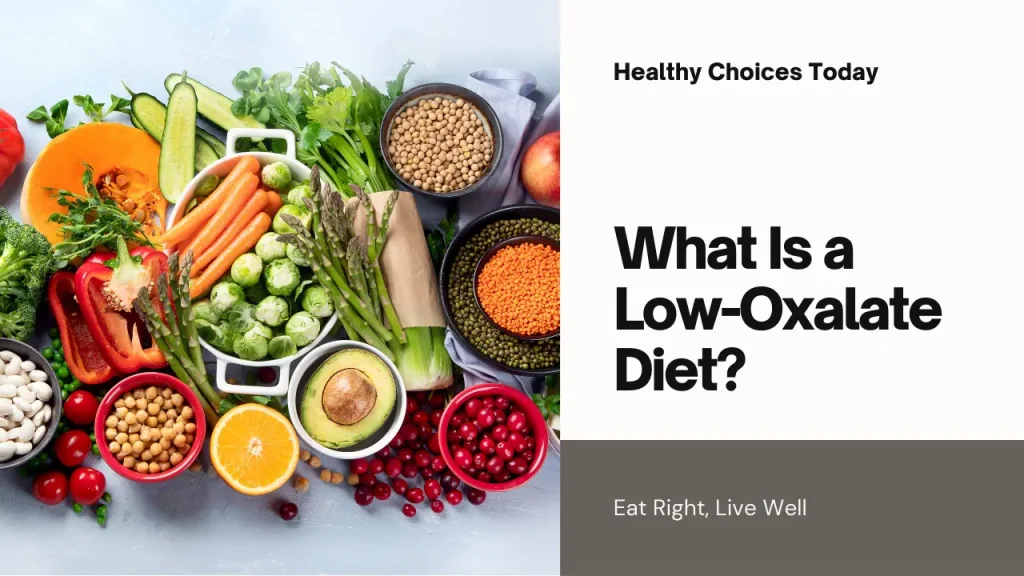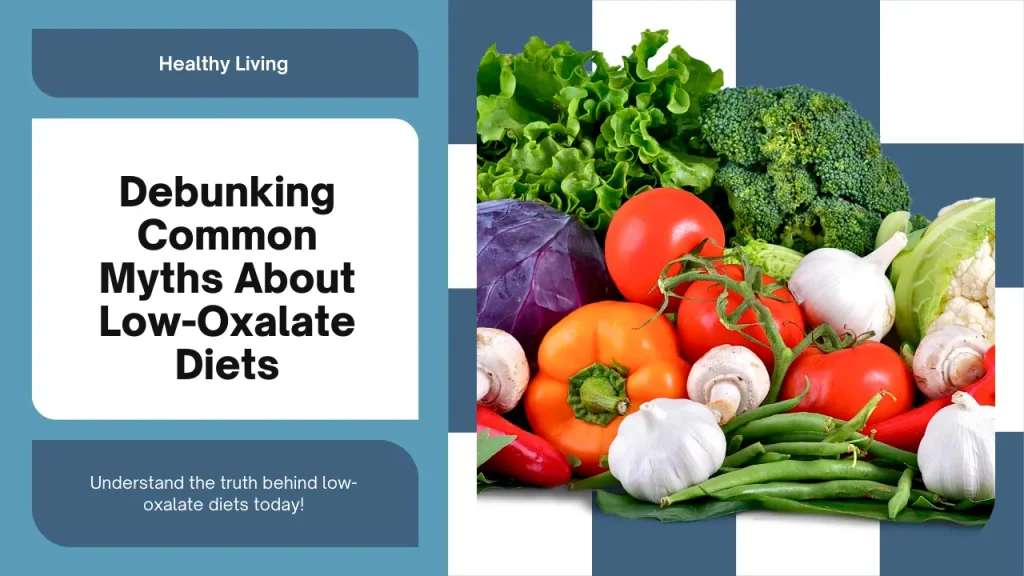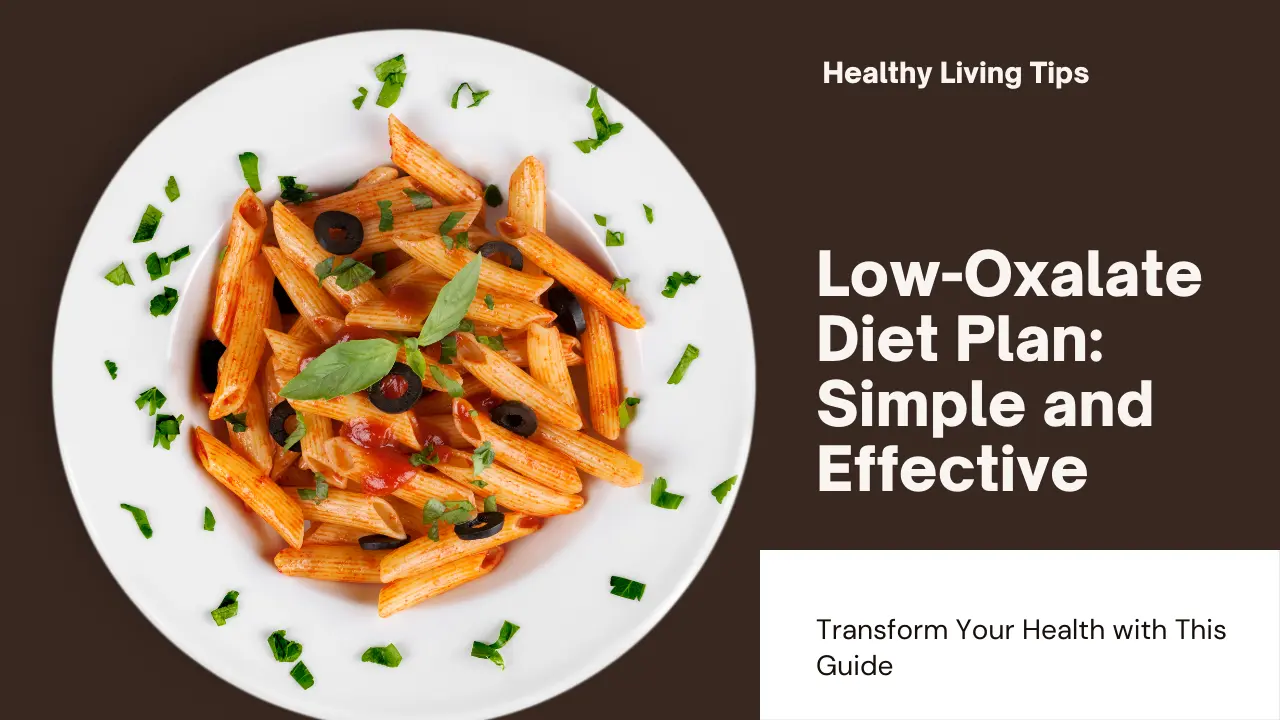Ever feel like your body is playing a prank on you? You’re eating healthy—lots of veggies, nuts, and tea—only to find out that some of those “good” foods might be causing kidney stones. I’ve been there, and trust me, the pain is no joke. That’s where a low-oxalate diet plan comes in. By making a few smart swaps, you can still enjoy delicious meals while protecting your kidneys. In this guide, I’ll break down exactly what to eat, what to avoid, and how to build a low-oxalate meal plan that fits your lifestyle. Let’s make healthy eating for kidney stones simple and stress-free!

What Is a Low-Oxalate Diet?
Ever feel like some health advice is a bit of a trap? One day, you’re told to load up on spinach and almonds because they’re superfoods, and the next, you find out they might be contributing to kidney stones. Frustrating, right? That’s exactly why a low-oxalate diet plan exists—to help reduce the risk of those painful stones while still keeping your meals nutritious and satisfying.
So, what’s the deal with oxalates? They’re naturally occurring compounds found in many plant-based foods. Your body usually flushes them out, but sometimes, they bind with calcium and form crystals—hello, kidney stones! The good news? You don’t need to eliminate oxalates completely; just managing your intake can make a huge difference.
A low-oxalate diet isn’t about restriction—it’s about making smarter choices. Think of it like curating a playlist: you swap out a few high-risk songs (foods like spinach and beets) for equally great alternatives (like zucchini and cabbage) that keep things flowing smoothly. This balance helps protect your kidneys without sacrificing flavor or variety.
Who Should Follow a Low-Oxalate Diet?
Not everyone needs to follow an oxalate-restricted diet, but if you’ve ever had a kidney stone, your doctor has probably already mentioned it. Kidney stones aren’t just an inconvenience—they’re a nightmare. If you’ve felt that sharp, relentless pain, you know you’ll do just about anything to avoid another one.
So, who benefits the most from a kidney stone diet plan?
- People prone to kidney stones – If you’ve had one before, your chances of getting another are high. Managing oxalates can lower that risk.
- Those with hyperoxaluria – A fancy term for having too much oxalate in your urine. It makes kidney stones more likely.
- Anyone with a history of calcium oxalate stones – These make up about 80% of kidney stones, and oxalate is the main culprit.
- People with certain digestive conditions – If you have Crohn’s disease, IBS, or have had gastric bypass surgery, your body might absorb oxalates differently, increasing the risk of stones.
Even if you don’t fall into these groups, healthy eating for kidney stones is just smart nutrition. It’s about balance, hydration, and picking foods that support your overall well-being.

Low-Oxalate Food List: What to Eat and Avoid
Here’s the big question: What can I eat? The good news is that a low-oxalate meal plan still includes plenty of tasty options. The trick is knowing what to swap and how to balance your plate.
Foods to Include (Kidney-Friendly Choices)
Not all foods are the enemy! These are your go-to options:
Vegetables – Cucumbers, zucchini, cabbage, cauliflower, mushrooms, and iceberg lettuce.
Fruits – Apples, bananas, cherries, grapes, and melons.
Proteins – Chicken, turkey, eggs, and fish. For a low-oxalate vegetarian diet, try tofu, lentils, and white beans.
Dairy – Milk, yogurt, and cheese help because calcium binds to oxalates, preventing stone formation.
Grains – White rice, oats, corn-based products, and white bread.
Foods to Limit or Avoid
Unfortunately, some “healthy” foods pack a high-oxalate punch. These are best minimized:
High-oxalate vegetables – Spinach, Swiss chard, beets, sweet potatoes.
Nuts and seeds – Almonds, cashews, and peanuts are all high in oxalates.
Beverages – Black tea, cola, and excessive vitamin C drinks (your body converts excess vitamin C into oxalates!).
Chocolate – Heartbreaking, but chocolate is high in oxalates. If you indulge, do it in moderation.
The key isn’t deprivation—it’s substitution. Love spinach? Try cabbage. Need a crunch? Swap almonds for pumpkin seeds. Tiny changes, big impact!
Creating a Balanced Low-Oxalate Meal Plan
Following a low-oxalate diet for kidney health doesn’t mean eating bland, boring food. You can still enjoy flavorful, balanced meals while protecting your kidneys.
Sample Low-Oxalate Meal Plan
Breakfast: Scrambled eggs with toast and a side of melon.
Lunch: Grilled chicken salad with romaine, cucumbers, and a lemon dressing.
Dinner: Baked salmon with white rice and steamed cabbage.
Snack: Greek yogurt with honey and cherries.
Pairing foods wisely is key. Calcium-rich foods (like yogurt) help block oxalate absorption, making meals even more kidney-friendly.
Staying hydrated is just as important—water helps flush out oxalates before they cause trouble. Aim for at least 8 glasses a day.
Foods to Limit or Avoid
Unfortunately, some “healthy” foods pack a high-oxalate punch. These are best minimized:
- High-oxalate vegetables – Spinach, Swiss chard, beets, rhubarb, and sweet potatoes.
- Nuts and seeds – Almonds, cashews, peanuts, and sesame seeds.
- Whole grains – Brown rice, quinoa, and whole wheat products (opt for white rice and refined grains instead).
- Chocolate and cocoa – Sad news for chocolate lovers—cocoa is high in oxalates.
- Certain beverages – Black tea, green tea, and dark colas can contribute to kidney stone risk.
Creating a Balanced Low-Oxalate Meal Plan
Eating for kidney health doesn’t have to be boring. A well-balanced low-oxalate meal plan ensures you get the nutrients you need while keeping oxalate intake in check.
Sample Low-Oxalate Meal Plan
- Breakfast: Scrambled eggs with white toast and a side of melon.
- Lunch: Grilled chicken salad with cucumbers, cabbage, and a light vinaigrette.
- Snack: Apple slices with cheese.
- Dinner: Baked salmon with white rice and steamed cauliflower.
- Hydration Tip: Drink plenty of water throughout the day to help flush out excess oxalates.
Low-Oxalate Recipes for Everyday Eating
If you love to cook, here are some easy low-oxalate recipes to try:
- Zucchini & Chicken Stir-Fry – Sauté chicken with zucchini, garlic, and a splash of low-sodium soy sauce.
- Banana Oat Pancakes – Blend banana, eggs, and oats for a simple, kidney-friendly pancake.
- Creamy Cabbage Soup – Simmer cabbage, onions, and carrots in a light broth for a comforting meal.
- Grilled Fish with Herb Butter – A simple dish with fresh herbs and a squeeze of lemon.
- Melon & Yogurt Parfait – Layer melon, yogurt, and a sprinkle of granola for a refreshing snack.
Tips for an Effective Oxalate Elimination Diet
- Reduce oxalate intake gradually – Cutting back too quickly can shock your system.
- Pair oxalates with calcium – Calcium binds to oxalates, preventing absorption (e.g., eat cheese with whole grains).
- Stay hydrated – Drinking water helps flush oxalates from your kidneys.
- Limit vitamin C supplements – Excess vitamin C converts to oxalates in the body.

Common Myths About Low-Oxalate Diets
There’s a lot of misinformation about oxalates. Let’s clear up some myths:
- “I need to cut out all oxalates.” Not true! You just need to manage intake, not eliminate them completely.
- “A low-oxalate diet lacks nutrients.” With proper planning, you can still get all essential nutrients.
- “Only people with kidney stones need to worry about oxalates.” While stones are the main concern, some digestive issues also benefit from lower oxalate intake.
Final Thoughts & Next Steps
Managing oxalates doesn’t mean sacrificing delicious food. A well-balanced low-oxalate diet can help prevent kidney stones while keeping meals enjoyable. Start by making small changes—swap high-oxalate foods for lower alternatives and stay hydrated. If you’re unsure about your needs, consult a doctor or dietitian for personalized advice.
Ready to take control of your kidney health? Try out the low-oxalate meal plan and enjoy kidney-friendly eating!
FAQs: The Ultimate Low-Oxalate Diet Plan for Kidney Health
1. What is a low-oxalate diet?
A low-oxalate diet limits foods high in oxalates, which can contribute to kidney stones. It helps reduce oxalate buildup while maintaining balanced nutrition.
2. Who should follow a low-oxalate diet?
People prone to kidney stones, those with hyperoxaluria, or individuals with digestive conditions that affect oxalate absorption should follow a low-oxalate diet.
3. What foods are safe on a low-oxalate diet?
Low-oxalate foods include cucumbers, zucchini, apples, bananas, chicken, fish, eggs, dairy, white rice, and oats. These foods support kidney health.
4. Which foods are high in oxalates and should be avoided?
Foods like spinach, beets, rhubarb, almonds, chocolate, peanuts, and sweet potatoes are high in oxalates and may contribute to kidney stone formation.
5. Can I follow a low-oxalate diet as a vegetarian?
Yes! A low-oxalate vegetarian diet includes white beans, tofu, dairy, oats, apples, and cabbage while avoiding high-oxalate plant foods like spinach and nuts.
6. How does calcium help with oxalate absorption?
Calcium binds with oxalates in the digestive tract, reducing oxalate absorption and lowering the risk of kidney stones. Dairy is a great source of calcium.
7. What beverages should I avoid on a low-oxalate diet?
Avoid tea, cola, and excessive vitamin C drinks, as they can increase oxalate levels. Instead, drink water, milk, and herbal teas to support kidney health.
8. How do I start a low-oxalate diet?
Begin by replacing high-oxalate foods with lower-oxalate alternatives. Drink plenty of water, balance meals, and consult a dietitian for personalized advice.
9. Can I eat chocolate on a low-oxalate diet?
Chocolate is high in oxalates and should be limited. If you crave sweets, opt for vanilla-based desserts or low-oxalate treats like apples and yogurt.
10. Is a low-oxalate diet restrictive?
No! A low-oxalate meal plan includes many delicious foods. The key is making simple swaps, like choosing cabbage over spinach or white rice over brown rice.

